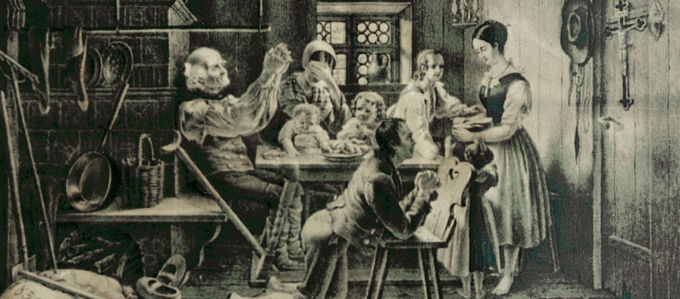
Already early on there were signs of an impending comeback. Prophecies that were uttered in Karlshuld, a small village in the south of Germany, blazed the trail for something that would happen a few years later in England: the re-establishment of the Apostle ministry.
Chief Apostle Jean-Luc Schneider will be in the south of Germany this coming weekend. On Sunday he will be in the city of Ulm, situated on the River Danube, to celebrate a divine service. This is a good opportunity to delve into the history of a region formerly known for its extended marshlands.
A destitute village
Donaumoos is the name of an area in which huge tracts of land were reclaimed from the marshes. This started in the Middle Ages and continued right to about the 1790s. The digging of drainage ditches and the cultivation of crops required a lot of manpower. Numerous people came to settle in the region, but most of them had little experience with this kind of work.
Before long, Karlshuld was one of the most populous settlements in the Donaumoos area, but the inhabitants were also among the poorest in the region: too many people, too little bread, poor housing. The mood among the people—who came from various parts of the country and from all walks of life—was explosive. Adding to the problems were the activities of criminals who had been banished to the area. There were fights, alcoholism, and much more, and soon the village had the worst reputation by far.
Faith in motion
This is what Johann E. G. Lutz—a young Catholic priest—found, who came to Karlshuld in the year 1826. He had been installed as the new pastor. Thanks to his modesty and helpfulness, but also on account of his being a very gifted preacher, he managed to win people for the gospel. In the beginnings, Lutz held weekly services, but soon—on being urged by the congregation—he introduced the daily mass.
Before long, a pronounced revivalist movement emerged. During Lent, the faithful felt driven to intensive praying, often lasting for hours. One New Year’s Eve, the pastor was woken and asked to hear the people’s confessions. The church was hopelessly overcrowded and he was there until dawn. At the end of February 1828 the first prophecies occurred.
Reoccupation of apostle ministry prophesied
“Did you not know that before the Lord comes, He will once again give apostles, prophets, evangelists, and shepherds, and churches as in the beginning?” This was one of the utterances that a man and two women were moved to make during a divine service. Further prophecies occurred until July 1928, focusing on the reoccupation of the Apostle ministry.
These prophecies were fulfilled a good four years later in England: Until 1835, the first twelve Apostles of the new era were called. Johann Lutz—who had in the meantime been promoted to dean and was no longer in Karlshuld—was unaware of these developments. He only heard about the re-establishment of the Apostle ministry in the year 1842 through Evangelist William Caird. In 1857 Lutz was sealed by Henry Drummond. As an Evangelist he established Catholic Apostolic congregations in Switzerland and in the south of Germany and thus blazed the trail for the apostolic faith.
Drawing: Karlshuld, 1830 – Reproduction: Bischoff Verlag




